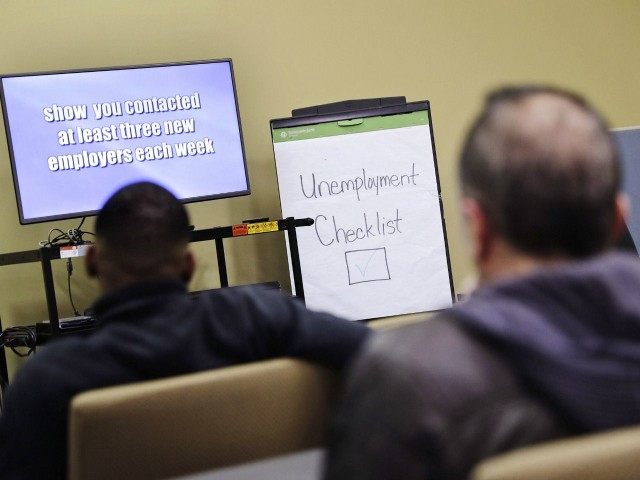Despite a forecast of 160,000 new jobs, the Obama Department of Labor announced that job creation in May plunged to 38,000, the worst monthly performance in 6 years.
The May jobs report issued on June 3 came in at 76 percent worse than the Bloomberg average of estimates by 90 Wall Street economists. The addition of just 38,000 workers is the lowest jobs number since September 2010, and is a huge dive from the 123,000 new jobs generated in April.
In a statistical fluke, the U.S. unemployment rate declined by 0.3 percentage points, to 4.7 percent in May, as frustrated American workers gave up trying to find jobs and dropped out of the labor force. The total number of Americans not in the labor force also hit a new high, at 94,708,000.
The terrible economic performance tanked the foreign exchange rate of the U.S. dollar by almost one percent. The stock market, which was up about one half percent in pre-opening trading, tanked a full percent after the employment news.
Employers in May added the fewest number of workers in almost six years, reflecting broad cutbacks that may raise concern about U.S. growth and prompt Federal Reserve policy makers to put off an increase in interest rates.
U.S. annual GDP growth had decelerated from a positive 1.4 percent in the October through December 2015 fourth quarter to just 0.8 percent in the first quarter of 2016. But Wall Street analysts had expected a strong rebound to 1.8 percent for the April through June period. Now, with weak May employment numbers, analysts will slash growth estimates.
The U.S. Federal Reserve will see puny employment gains as reducing the odds of an upturn in household spending and economic growth after the poor start to the year. With the central bank tightening up its balance sheet in anticipation of starting a cycle of raising interest rates by July, the value of the U.S. dollar had been strengthening.
Chicago Fed President Charles Evans told CNBC on June 2, “Two rate hikes in 2016, that’s my own call for that, if the data continues to be in line with my outlook.”
A week earlier, Fed Governor Jerome Powell, in a speech to the Peterson Institute for International Economics, stated that economic data in April seemed to support the Federal Reserve raising interest rates. He suggested that inflation may be picking up with durable goods orders rising at a 3.4 percent annual rate, pending home sales hitting new highs and the price of oil jumping to $50 a barrel.
The range of estimates by economists surveyed by Bloomberg for the June 3 DOL was 90,000 to 215,000 jobs. The shocking 38,000 May number was also accompanied by grim revisions from the Department of Labor to the prior two months’ reports, which subtracted another 59,000 jobs from payrolls.
The hiring stall was broad-based, including slowdowns in construction and manufacturing. Factories cut employment for the third time in the last four months, while construction companies shed 15,000 jobs.
The number of Americans working part-time, because they cannot find a full-time position for “economic reasons,” spiked by 400,000 to 6.4 million in May, the highest since rate since August 2015.

COMMENTS
Please let us know if you're having issues with commenting.